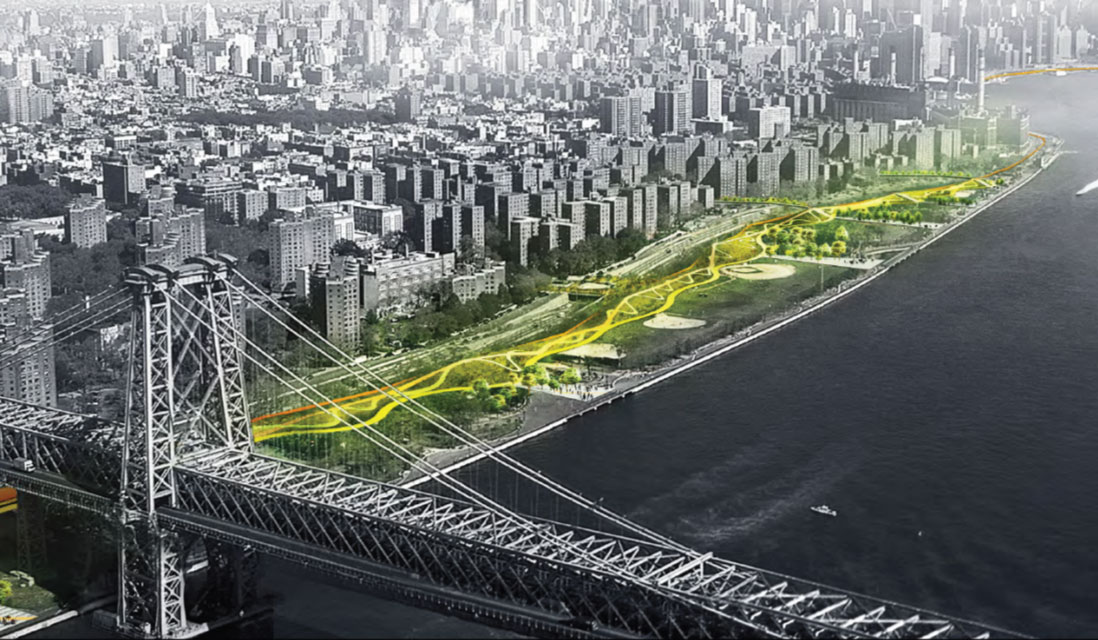Monday afternoon will mark the first vote in the ULURP process to raise the East River Park by eight to 10 feet — something that doesn’t thrill some Lower East Side residents concerned with how they will access waterfront greenspace during the construction period.
The ULURP application to transform the 1.5 miles of parkland by 2023 in phases will advance quickly throughout the month, starting with the Subcommittee on Landmarks, Sitings and Dispositions on Nov. 4, then the Land Use Committee on Nov. 12 and a full City Council vote on Nov. 14.
Though construction contracts have yet to be awarded, AECOM has been tasked with surveying and mapping the park in preparation for the estimated $1.5 billion climate change mitigation effort.
One group, East River Park ACTION, has gathered petition signatures to illustrate opposition to the proposal to, in essence, destroy park as it is in order to redevelop it into a new park that will serve as a seawall against 100 year storms like Sandy and the expected sea level rise by 2050.
Advocates such as East River Park ACTION claim this version of the plan is night and day to an earlier proposal from a simple seawall that would allow the park to remain open. Up to 2,000 signatures from NYCHA residents have been collected, and earlier hearings saw residents express the need for green-space as a mental health necessity.
“We’ve been testifying at hearings, demonstrating, and calling and writing our elected officials in overwhelming numbers. Yet our Council members are supporting this terrible plan,” East River Park ACTION founder Pat Arnow said.
These concerns have not necessarily fallen on deaf ears to the elected officials and agencies involved who still back the plan. They stress the need to complete construction in phases that will allow segments of the park within the 2.5-mile project area to remain open.
City Parks Commissioner Mitchell Silver argued that one reason to start with a blank slate is because the greenspace will need a fresh start anyway. Up to 258 trees have already been removed from the park because of their inability to cope with soil salinization already resulting from sea level rises.
Mayor Bill de Blasio himself has said the East River Park must stay accessible to the public as much as possible while the build effort is underway.
Councilwoman Margaret Chin said she has been assured by the administration that 42 percent of park would remain open during different periods.
Councilwoman Carlina Rivera, whose district covers the park, has called the plan a “bold” and necessary solution considering the $19 billion in damage caused by Superstorm Sandy in October 2012.
Monday’s council hearing starts at 1 p.m. at 250 Broadway.





































